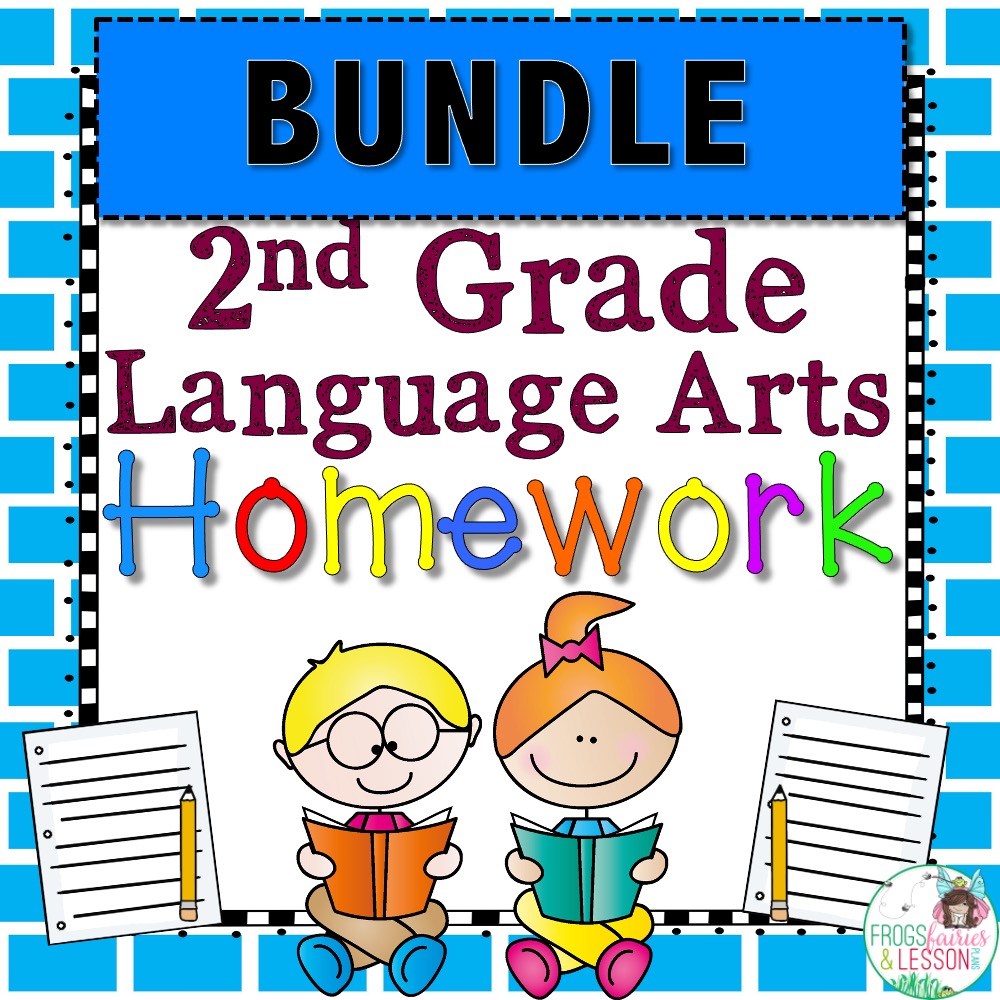Are you teaching conjunctions in first grade? Then, I’d love to share my anchor charts, the resources I use, and my lesson ideas with you!
For more ideas, read the post Teaching Conjunctions.
Conjunction Anchor Charts
Teaching conjunctions in first grade will require you to create several anchor charts. I recommend preparing all your charts and getting all your resources together instead of focusing just on the conjunction you’ll be teaching each day. It takes a bit of time, but it makes your Conjunctions Unit a breeze to teach!
If you haven’t created your own charts, feel free to copy mine!
Conjunction: BUT
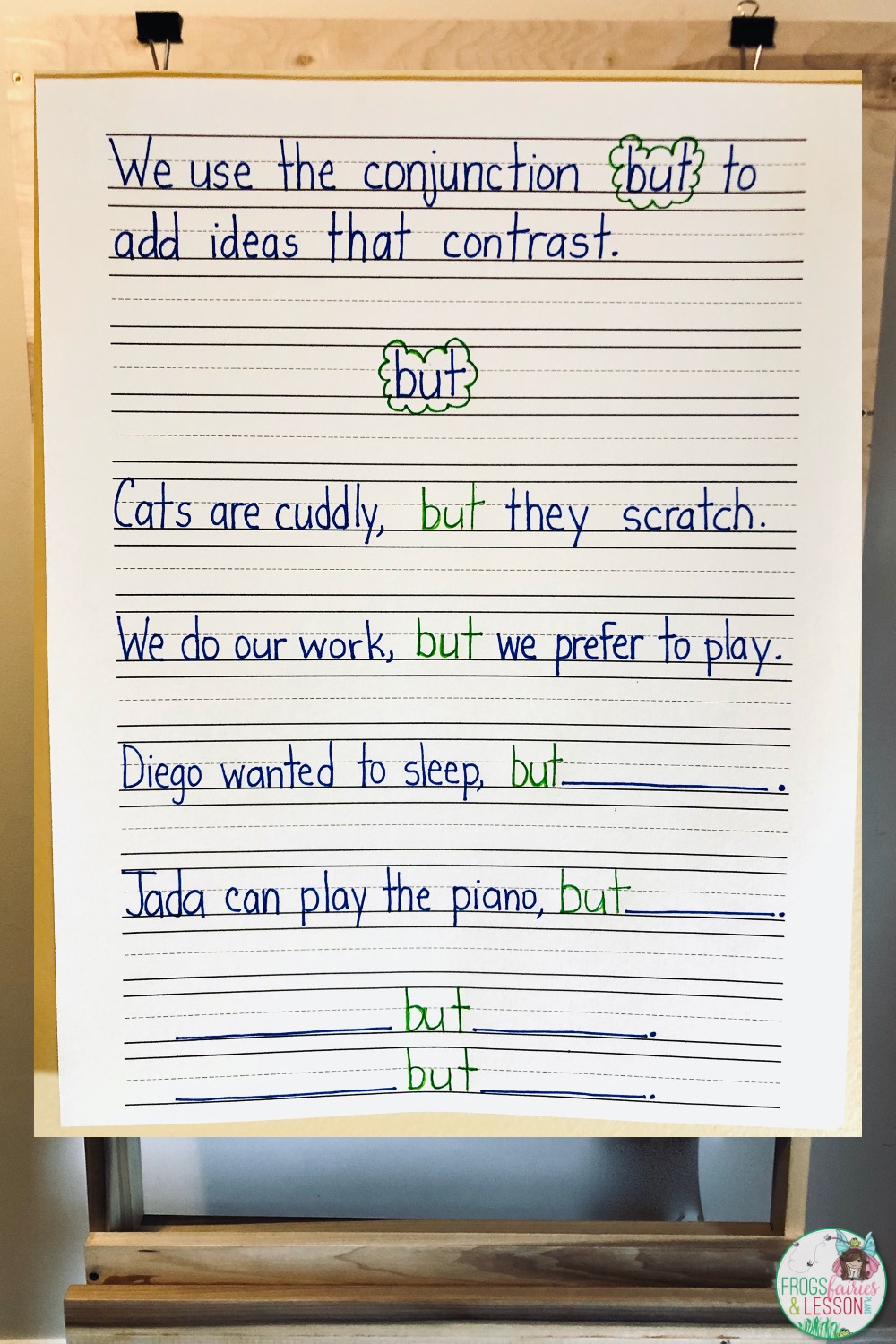
Conjunction: OR
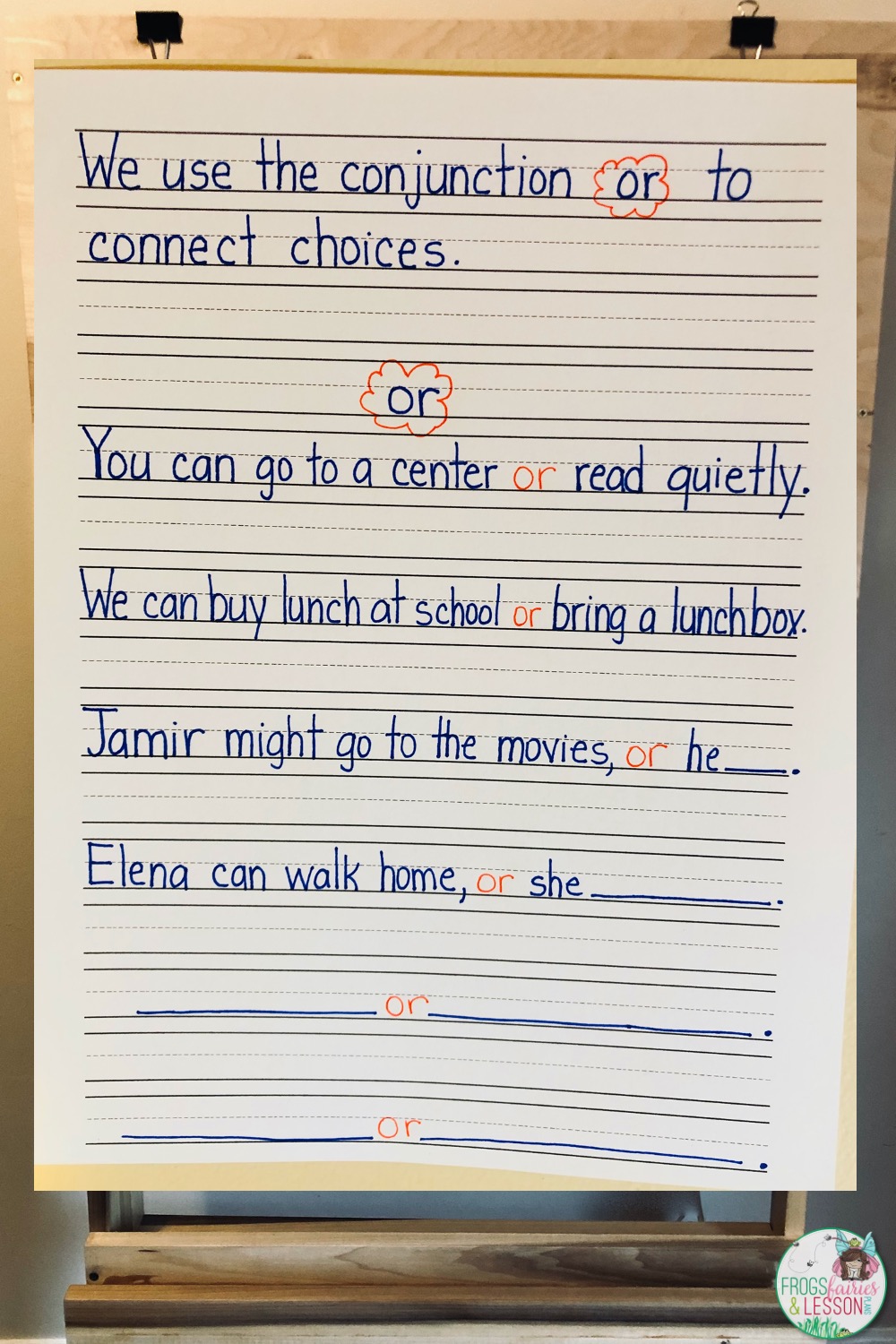
Conjunction: SO
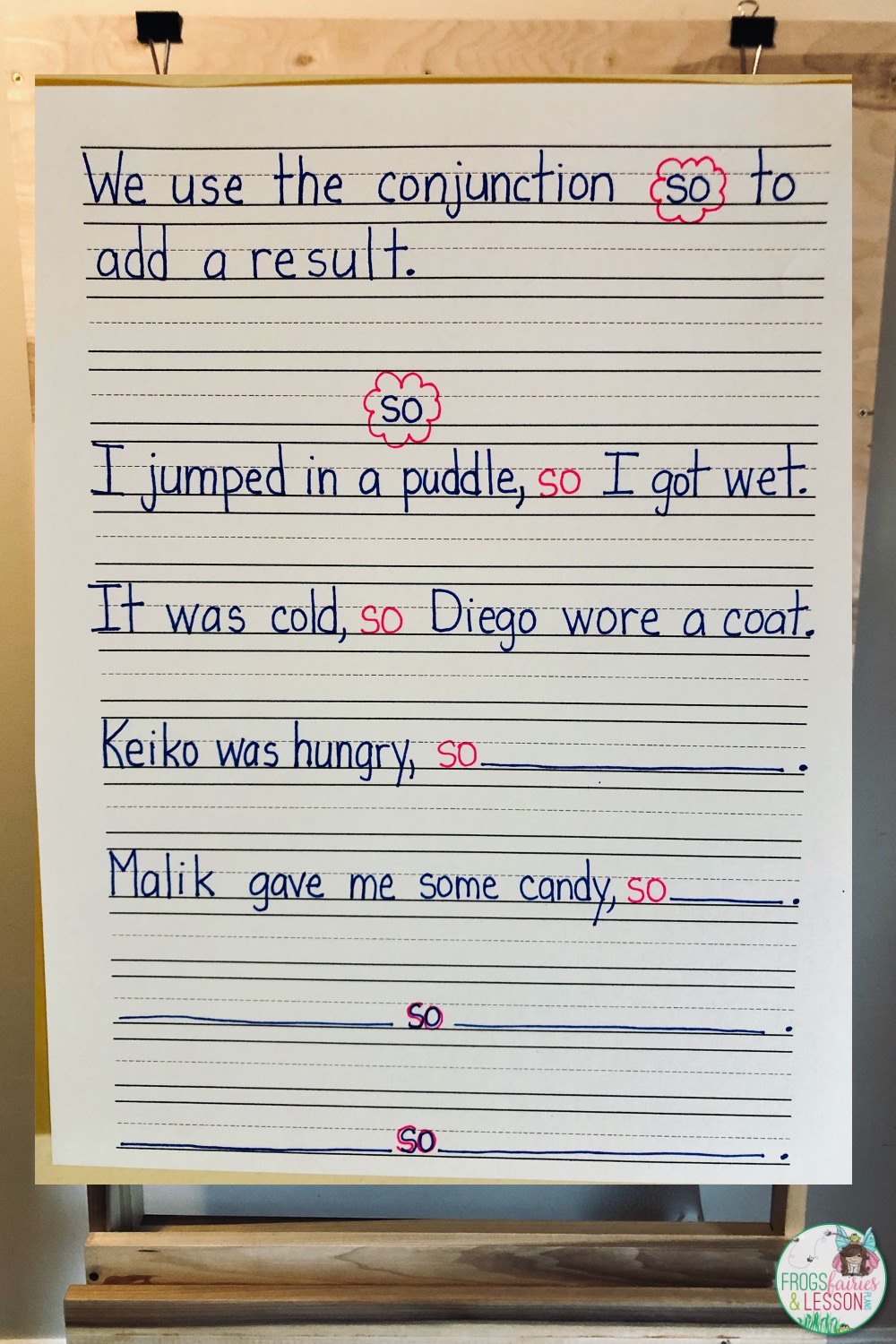
Conjunction: BECAUSE
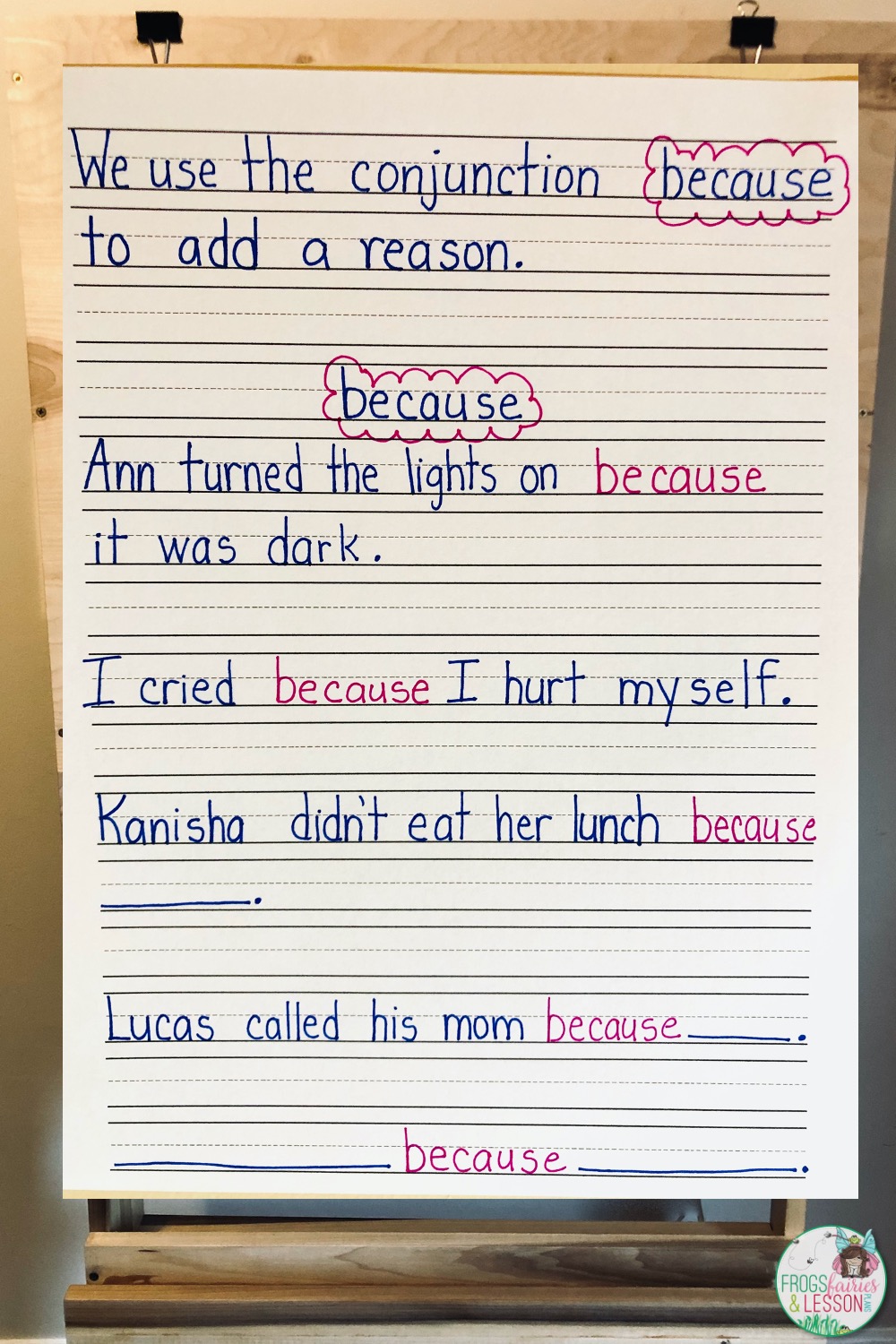
Conjunction Lessons
1. Connection
My mini-lessons start with a connection between something my students are already familiar with and new information that’s on the chart.
I might say, for instance,
“You already know about words that name things, and words that describe things. But today, you are going to learn about words that help connect pieces of information to each other. Those words are called conjunctions.”
2. Teaching Point
This is where I’d introduce the conjunction “and” with my first anchor chart.
AND
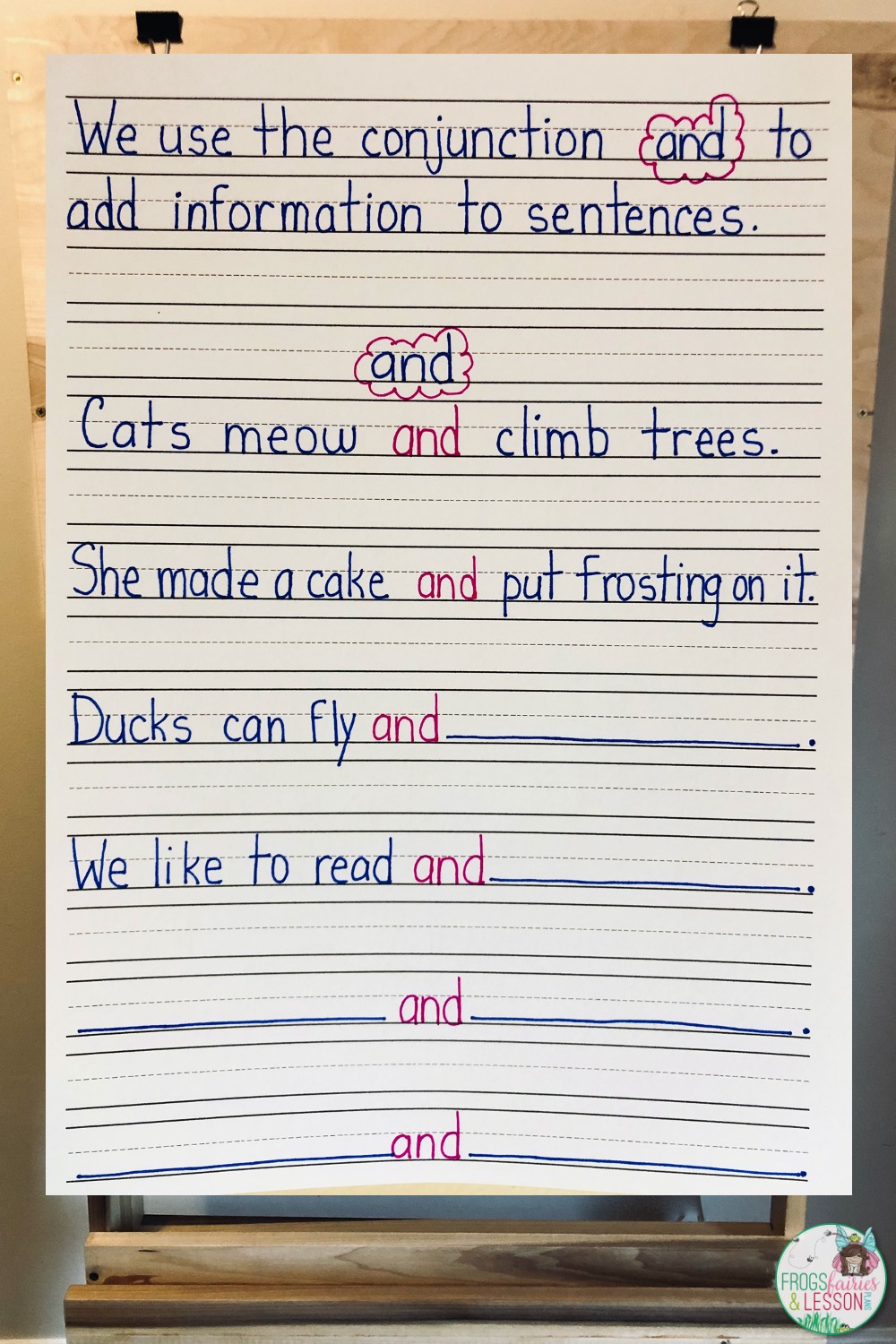
Next, I’d continue with,
“Cats meow and what else? They climb trees.” “The conjunction “and” is helping us understand that there’s more information about what cats do. It’s connecting the two things that cats do.”
Then,
“She made a cake and what else? She put frosting on it.” “The conjunction “and” is helping us understand that she did more than just make a cake. There’s more information about what she did, and “and” connects both things that she did.”
3. Active Engagement
Use the next sentences on the chart to allow your students to practice using the conjunction “and” in a controlled setting. You can ask partners to turn and talk, then call on a few to help you fill in the chart.
Something to consider about anchor charts:
Because all the information for the lesson is already on this chart, it can be distracting to students. Not everyone does this, but I usually cover up the parts I don’t want to show by folding (without creasing) the bottom of the chart up, and holding it with paper clips on both sides.
4. Link
Once students have had a chance to practice, encourage them to look for that day’s conjunction when they read, and to use conjunctions when they write.
A great way to link your lesson to “real life” use, is through literature!
Books
It’s important to show students the isolated parts of speech we’re teaching in authentic ways. For instance, how do authors use them in books? To illustrate that, prepare a few books ahead of time to use with your lessons.
1. First, look for examples.
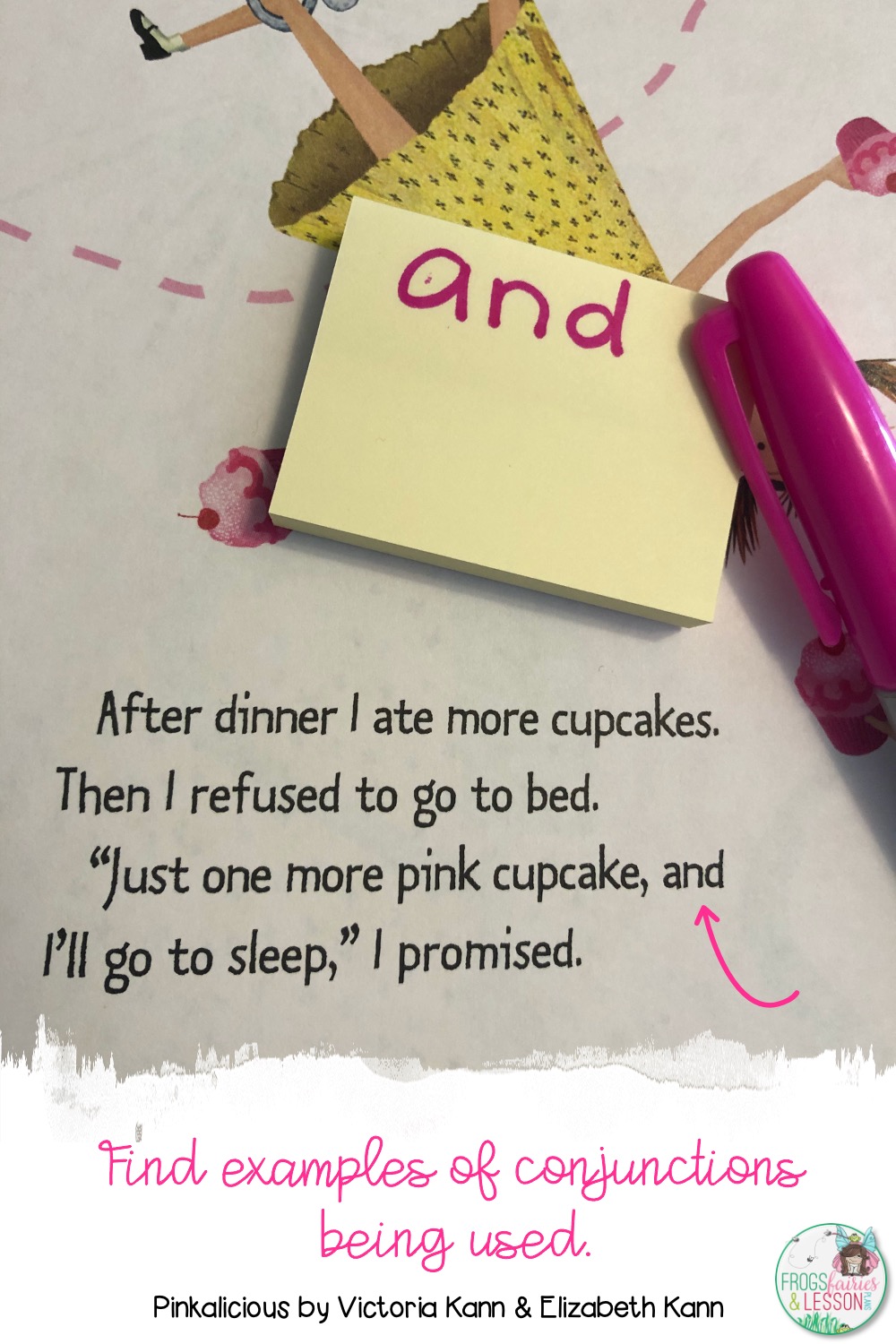
2. Then, bookmark the pages with mini Post-Its.
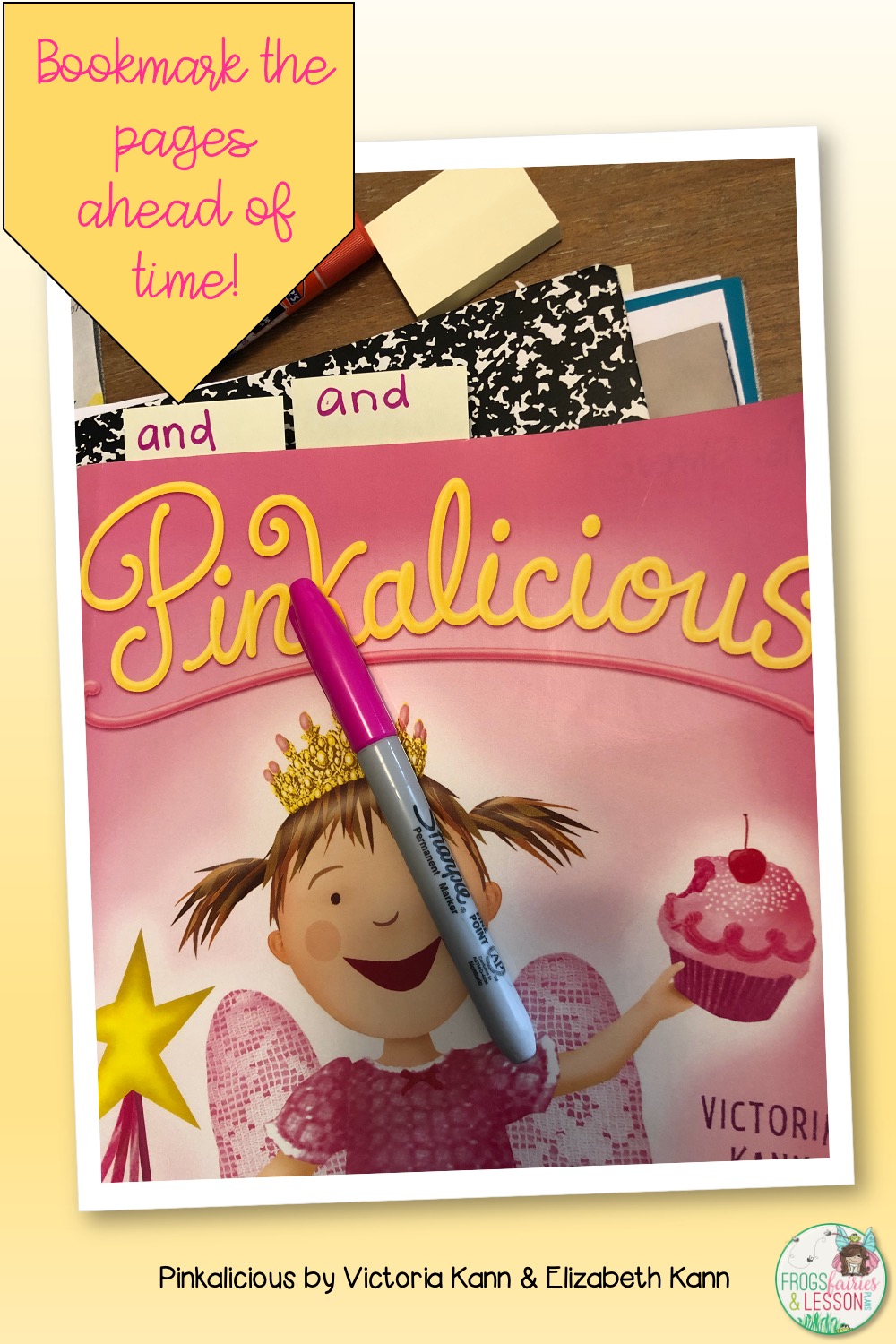
3. Read!
Make sure you read a few pages of the books you selected, and show your students how conjunctions appear in literature, and in everyday speech!
5. Independent Practice – Hands-On Activities
For more guided practice and the active engagement parts of my Conjunctions mini-lesson, I like to do hands-on activities. As you might imagine, you can’t have too many of those when teaching conjunctions in first grade! Here are just a few more things you can do:
1. Choose the Conjunction
In this first activity, students read incomplete sentences and decide what conjunction best completes the sentence. Of course this activity only works once students have learned at least 2 conjunctions.
In order to differentiate instruction, you can keep it simple, like this one, or you can mix more conjunction choices once your students are able to handle it.
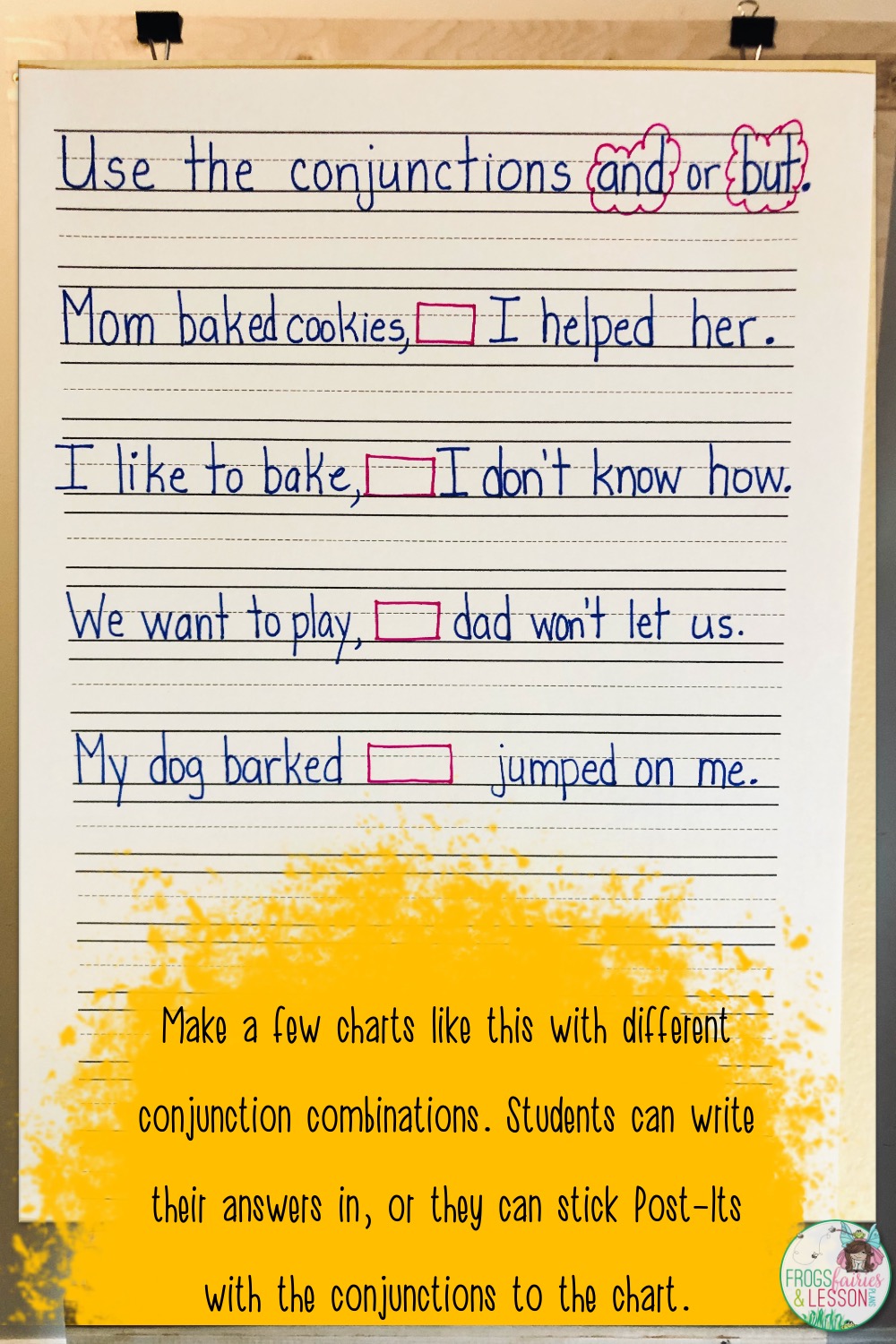
Something else to consider, is that you might want to reuse your charts over the years, in that case, you’d write the conjunctions on Post-Its, and have students use those instead of writing the answers in.
2. Sentence Match (Guided)
Similar to some of my anchor chart activities, this one requires students to use sentences and conjunctions to match them up. To prepare this activity, you would first think of a few sentences that use conjunctions. Then, you’d write the first part of those sentences, up to the conjunctions, on the board. Last, you’d write the second part of the sentences on sentence strips.
To do this activity, students read the first sentence on the board and decide which sentence strip best completes it. You can place the sentence strips on the board using tape or magnets.
3. Sentence Match Game (Independent)
This is a modification of the guided version, but it works if you want your students to practice independently. Simply write both parts of the sentence on strips of paper and have students mix and match until they all make sense. I have this activity as a Literacy Center game.
You can see a video of this activity in this blog post.
4. Other
The last activity I want to share is this one. It’s pretty self-explanatory!

Independent Practice for Conjunctions
As students understand what conjunctions are for and how to use them, it’s time to give them many opportunities to practice on their own. For that reason, I use a variety of practice sheets and games. My students love these because they can practice the same skill in different ways, and as a result, they are never bored!
To give you an example of what I use, this is a set of worksheets for “and/but”.
As you can see, this first sheet is easy and quick to complete. All the students need to do is read the sentences and fill in the blanks with the correct conjunction.
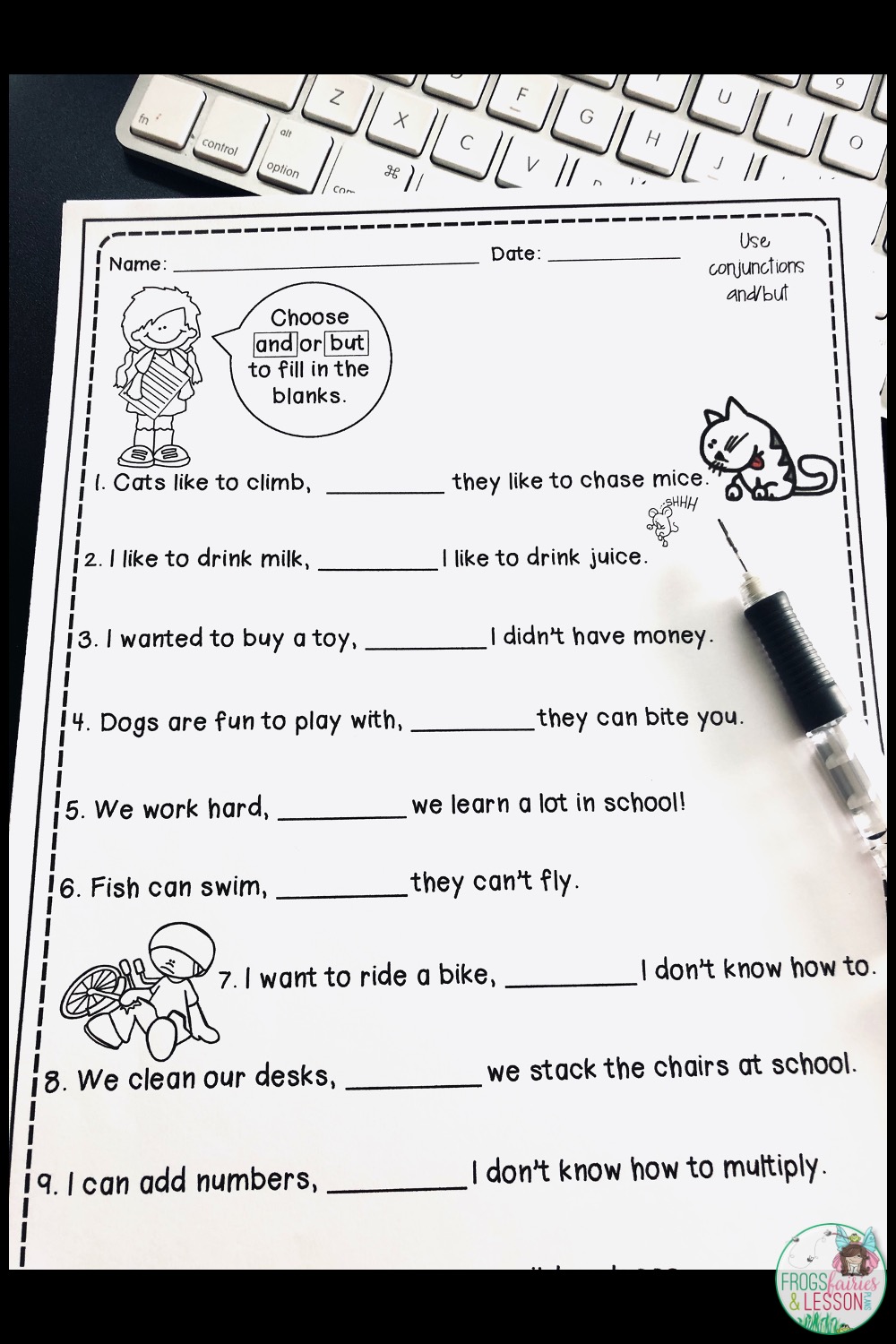 |
| Available for purchase here. |
This cut and paste is very similar to the one you just saw, but it takes longer to complete, and targets motor and organizational skills.
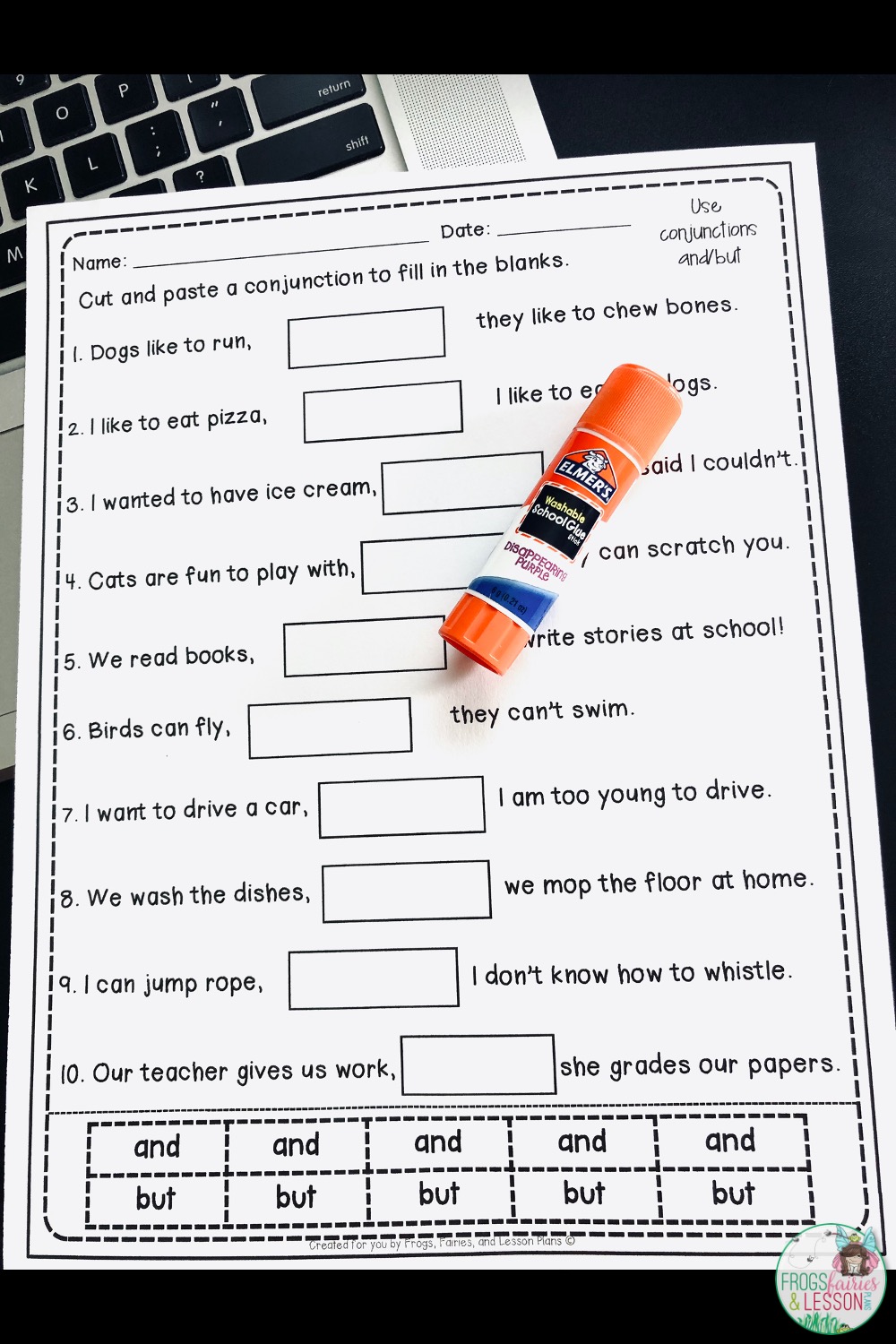
Take a look at a third way to practice using the conjunctions “and/but”. In this case, students use with their own ideas to complete the sentences.
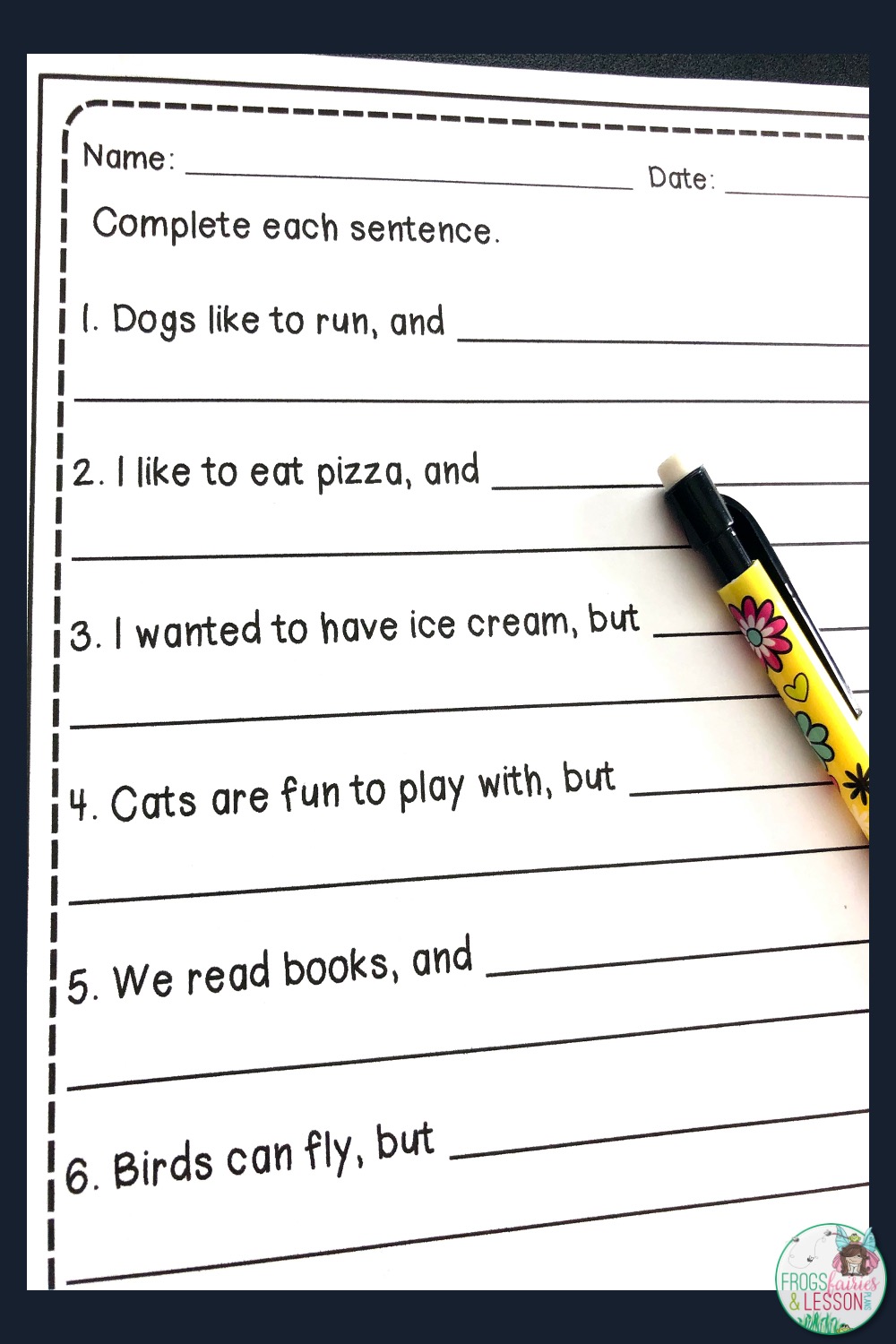
Lastly, a multiple-choice sheet gives you a quick way to assess how well your students can use the different conjunctions you taught during your unit!
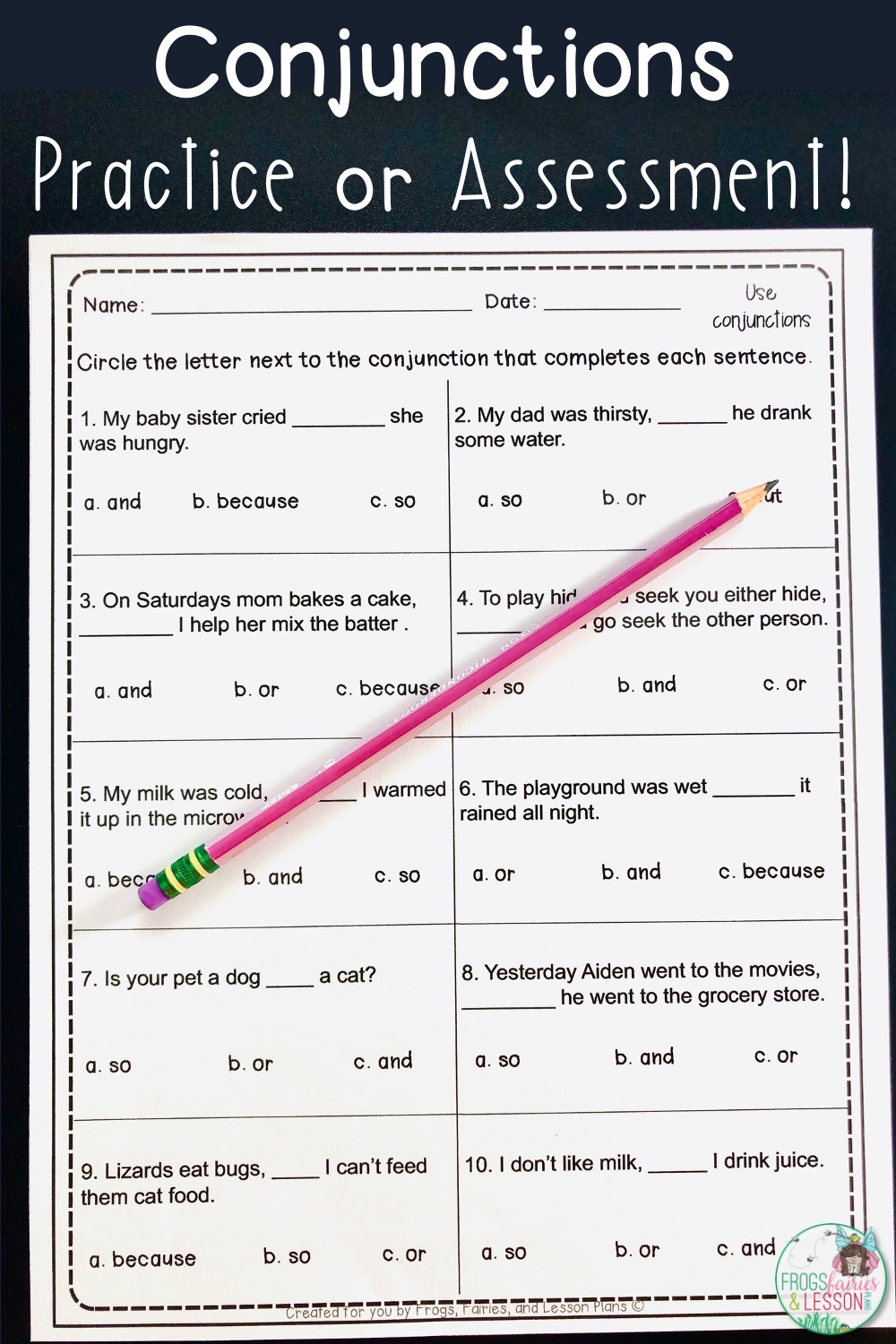
There you have it!
You can find this Conjunction Packet and other Parts of Speech packets in my TpT store. All packets include worksheets and games for your Literacy Centers.
1st Grade Parts of Speech Resources – Beyond Teaching Conjunctions in First Grade!
 |
| Bonus packet included in the Bundle! |
2nd Grade Parts of Speech Resources – Beyond Teaching Conjunctions in First Grade!
Language Arts Spiral Review/Homework
And last but not least! Sign up for my mailing list to receive teaching tips and samples in your inbox!
Let me send you this Parts of Speech sample as a thank you!










